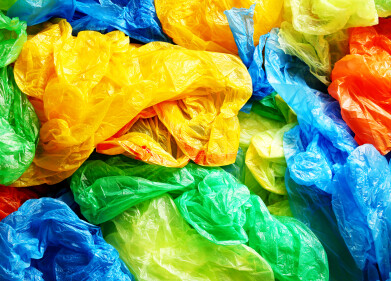Environmental laboratory
What Is Volvo's Living Seawall?
Mar 07 2019
Swedish car manufacturer Volvo has taken the unusual step of attempting to boost biodiversity and aid conservation efforts by building an environmentally-friendly seawall along Sydney harbour. The Volvo Living Seawall is comprised of 50 hexagonal tiles, specifically designed to mimic the natural structure of mangrove trees and provide flora and fauna a habitat in which they can thrive.
Volvo undertook the project in conjunction with the Sydney Institute of Marine Science and Reef Design Lab after it emerged that more than half of the Sydney coastline had been replaced by artificial walls. The amount of plastic entering global waters (the approximate equivalent of one rubbish truck every minute) exacerbates the problem via highly-dangerous and increasingly-ubiquitous microplastics, which harm marine populations and erode natural habitats.
The Living Seawall is an attempt to undo some of that damage, in keeping with Volvo’s motto of “omtanke”, a Swedish word meaning consideration and caring. It is hoped that over time, the presence of the wall can bolster the cleanliness of the water and attract a variety of marine species back to Sydney’s bay.
Thinking outside the box
Conventional seawalls have been linked to the degradation of ecosystems and an attendant drop-off in plant and animal life in the surrounding areas. In a bid to combat this, Volvo have developed the Living Seawall, which is built from concrete that has been certified as safe for marine environments, reinforced with recycled plastic fibres. Each tile boasts a complex maze of intricate corners and recesses, designed to attract organisms like molluscs and oysters.
“Designed to mimic the root structure of native mangrove trees, the Living Seawall adds complexity to the existing seawall structure and provides a habitat for marine life,” explained Volvo. “This aids biodiversity and attracts filter-feeding organisms that actually absorb and filter out pollutants – such as particulate matter and heavy metals – keeping the water clean. The more organisms we have, the cleaner the water.”
The car company plan to continue monitoring on the impact that their project has on the local environment for the next 20 years, affording them the opportunity to observe which particular wall materials and designs have the most positive effects.
The ethos of “omtanke”
The Living Seawall is just one project which Volvo has undertaken to try and lend a hand to a flagging Mother Earth. Every year, the car company organises beach clean-ups all over the world to try and mitigate the gargantuan problem of plastic pollution. At the same time, they have pledged to remove all single-use plastics from their operations by the end of this year in favour of sustainable alternatives.
Meanwhile, Volvo aren’t neglecting their environmental obligations with regard to their day job, either. The company continues to investigate environmentally-friendly methods of road transportation and has pledged to put one million electric vehicles (EVs) on the world’s roads by 2025. They also seek to establish productive partnerships with sustainably-minded companies in an attempt to work together to help the planet.
Other businesses undertaking similarly environmentally-minded initiatives include compatriot furniture company IKEA, who have also vowed to phase out single-use plastics by next year.
Digital Edition
AET 28.4 Oct/Nov 2024
November 2024
Gas Detection - Go from lagging to leading: why investment in gas detection makes sense Air Monitoring - Swirl and vortex meters will aid green hydrogen production - Beyond the Stack: Emi...
View all digital editions
Events
Jan 12 2025 Abu Dhabi, UAE
Jan 14 2025 Abu Dhabi, UAE
Jan 20 2025 San Diego, CA, USA
Carrefour des Gestions Locales de L'eau
Jan 22 2025 Rennes, France
Safety, Health & Wellbeing LIVE
Jan 22 2025 Manchester, UK



















